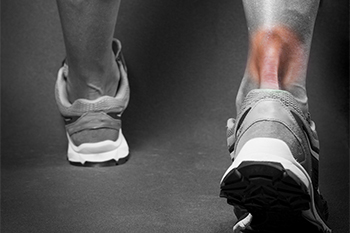Ainsley Roberson Rusevlyan, DPM
(252) 946-1181Washington, NC

People who have endured an Achilles tendon injury are often not mistaken about it. A common sign is an immediate pain and discomfort, and it can be extremely difficult to walk. It can happen as a result of increasing running speed and mileage too quickly, and this type of injury can fall into two categories. Noninsertional Achilles tendinitis affects the middle of the tendon, and younger people are prone to developing this type of injury. The lower part of the tendon is affected where it attaches to the heel bone during insertional Achilles tendinitis and can affect people of all ages. Additional symptoms can include heel and calf pain, and there can be a limited range of motion. Some people develop Achilles tendon injuries from not warming up or cooling down properly, in addition to wearing shoes that do not fit properly. This is an injury that needs prompt medical attention for a complete recovery so it is suggested that a podiatrist be contacted who can guide you toward the best treatment techniques.
Achilles tendon injuries need immediate attention to avoid future complications. If you have any concerns, contact Ainsley Rusevlyan, DPM of InStride Roberson Footcare. Our doctor can provide the care you need to keep you pain-free and on your feet.
What Is the Achilles Tendon?
The Achilles tendon is a tendon that connects the lower leg muscles and calf to the heel of the foot. It is the strongest tendon in the human body and is essential for making movement possible. Because this tendon is such an integral part of the body, any injuries to it can create immense difficulties and should immediately be presented to a doctor.
What Are the Symptoms of an Achilles Tendon Injury?
There are various types of injuries that can affect the Achilles tendon. The two most common injuries are Achilles tendinitis and ruptures of the tendon.
Achilles Tendinitis Symptoms
Rupture Symptoms
Treatment and Prevention
Achilles tendon injuries are diagnosed by a thorough physical evaluation, which can include an MRI. Treatment involves rest, physical therapy, and in some cases, surgery. However, various preventative measures can be taken to avoid these injuries, such as:
If you have any questions please feel free to contact our office located in Washington, NC . We offer the newest diagnostic tools and technology to treat your foot and ankle needs.